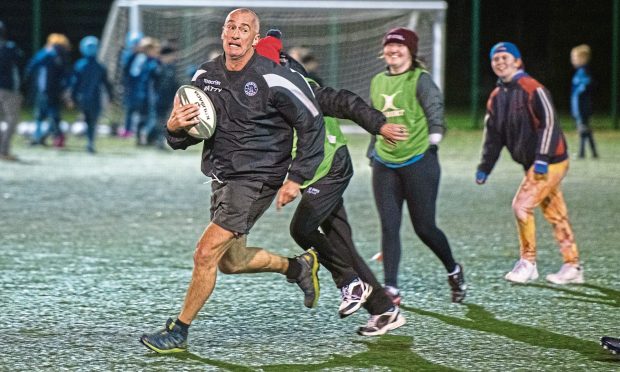Stay inside was the advice. All day.
Seriously, have you ever tried staying inside a hotel room all day? Especially in Japanese hotels, where the rooms are so tiny that you can’t actually open your case without simultaneously being unable to open the room door or the bathroom door?
So you don’t. To be honest, the first six or seven hours of Typhoon Hagibis Day here in Yokohama were like a wet Saturday morning in Broughty Ferry, and I understand you’ve had a few of them back home since we’ve been here.
I was surprised and – I admit – not a little excited when I heard a commotion in the street below my fifth floor room window midway through the day, a monumental clatter. Was this the high winds and tumbling debris we were promised?
No. It was the guy in the building across the road putting out the bins, and the bin van was collecting them.
For the Japanese, daylight in Yokohama went on largely as normal, even if it was a little more wet and probably a lot less busy than their customary Saturday. Some of the countless convenience stores were closed, and the restaurant attached to my hotel was shut.
But there were a couple of open convenience stores down the road, and although they hadn’t been restocked with fresh food, there were plenty of other provisions.
On the TV, two of the channels were giving rolling updates on Hagibis, one showing flooding near the stadium where Scotland are supposed to play Japan. The rain seemed much heavier up in Tokyo, where some streets were awash.
Some of my colleagues’ phones – not mine – flared up in the middle of the day with emergency bulletins in kanji script.
After a tangled attempt at translation, we discovered certain wards of Yokohama had a “Category Four” Evacuation order, and then had to struggle to identify 1) the identity of the various wards of Yokohama City and 2) which ward we were actually in. After a few minutes of blind panic, we discovered the evacuations were slightly north of where we were.
It was much rougher in Chiba to the east of Tokyo, where Typhoon Faxai had hit four weeks ago and caused billions of pounds of damage. The first casualties were being reported from tornadoes attached to Hagibis in Chiba just after midday. The poor people there – many houses hadn’t been repaired since Faxai.
Then just after nightfall, around 5.30 pm, the hotel started moving. The effect was as if the building (14 storeys high) was a massive wine cork and some giant was forcing a corkscrew down the middle of it.
It went on for a couple of minutes. Was this the epicentre of Hagibis passing?
No, it was an earthquake, 5.7 on the Richter scale, just a “small one”, apparently. The typhoon wasn’t even here yet. As if we didn’t have enough to contend with.
Shortly afterwards I got a text from a friend with a bulletin from the Japanese news agency NHR saying Hagibis had made landfall on a peninsula near Shizuoka, where Scotland played Russia last week. We’d only just come from there yesterday, and Hagibis seemed to be following our path.
Quite obviously the natural inclination at this point was to get out and get a family-sized bag of Cheesy Puffs and maybe a beer. So we did that, but the rain was getting heavier and quickly retreated back indoors.
Only by now, the streets had changed. When earlier the Japanese had been out in some numbers, doing their daily stuff, outside our hotel and the one directly across the street were a small crowd of visitors – English fans denied their cancelled game against France, mostly, and a few Scots.
The Japanese, knowing the worst stuff was coming, had taken shelter at this stage, like you’re supposed to. The visitors, on the other hand, waited until the worst stuff was coming and then came out to point at it.
And it duly came shortly afterwards, right on schedule, at about 7.30 in the evening. Gusts made the hotel building creak ominously for two hours. It looked and somehow felt worse if you went to the window and saw the trees and street signs below bending in the wind.
But it ended quickly. We thought Hagibis would hit just a few miles north of us, but it seems Shizuoka took the brunt – 80 miles south of Hagibis was supposed to land. The devastation on the TV news – broken bridges, huge swells in rivers, houses with roofs ripped off – was all there and in Chiba.
It’s awful for those people. Hagibis didn’t devastate the city, but rugby still feels like a silly game going on among all this.


